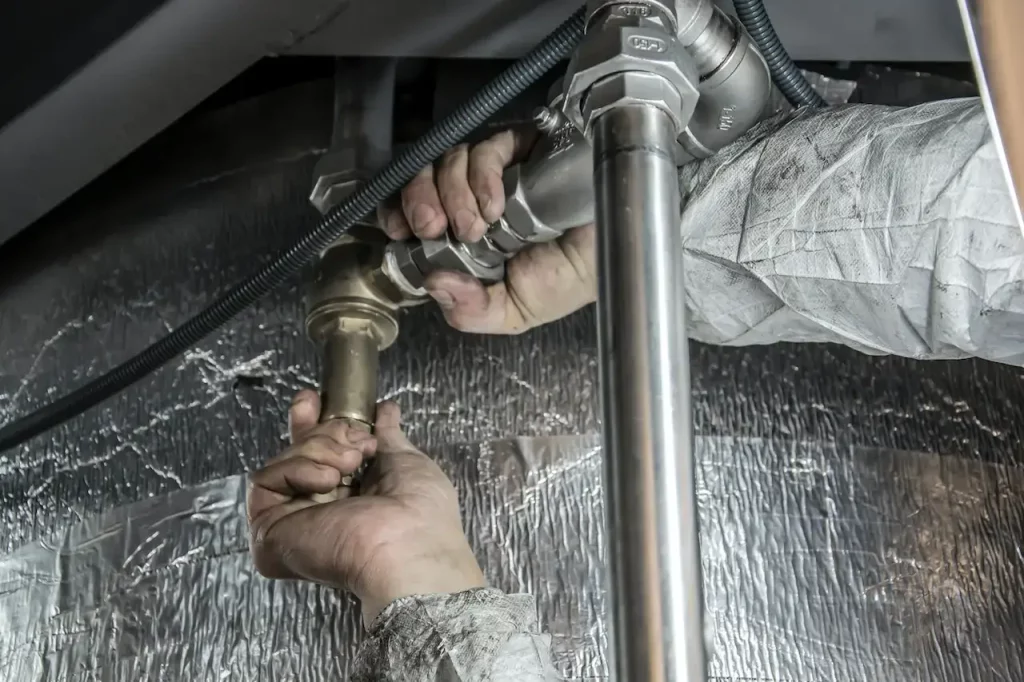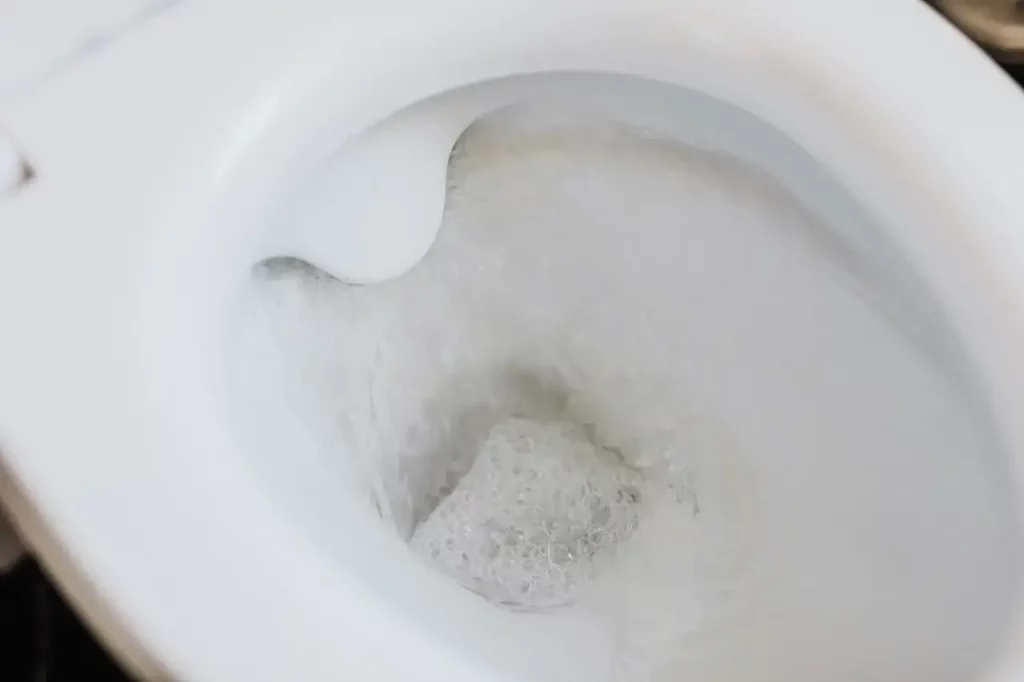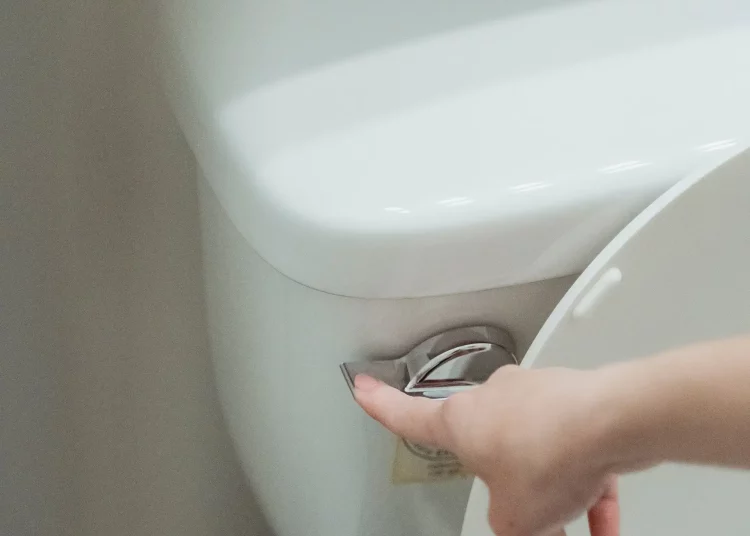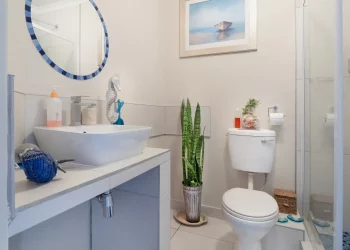A running toilet is a common issue caused by various factors, such as a faulty flapper, a damaged fill valve, or sediment buildup in the tank. If left untreated, it can cause significant water wastage and increase your water bill substantially.
However, with some basic knowledge and the right tools, you don’t have to call in a professional plumber whenever your toilet starts running.
This article will guide you through troubleshooting a running toilet like a pro. We will cover everything from identifying the root cause of the problem to fixing it yourself quickly and easily.
So let’s get started!
How Do Toilets Work
Toilets are truly a marvel of modern civilization. They allow us to dispose of our waste without much thought, and most of us take them for granted. However, have you ever wondered how these porcelain thrones work?
Toilet designs may differ around the world, but they all function based on the same principles. A tank of water or stream of water in a pipe is used for flushing away waste down a drain. Inside the tank are two main valves: the fill valve and the flush valve.
The fill valve is controlled by a bobber or some buoyant mechanism that turns the valve on when the tank is empty, and the flush valve lets water into the toilet bowl to do all the heavy lifting.
Pulling the tank lever to flush activates the flush valve, which is a simple flapper or seal on the bottom of the tank. Once the seal is broken, all the water in the tank flows down into the bowl through an opening.
Gravity then pulls the flush valve down, resealing the tank, and new water refills the tank to be ready for the next flush.
But how does dumping a bunch of water into a toilet cause it to flush? It all has to do with some clever pipe design. The hole at the bottom of the bowl leads into an upside-down U-shaped pipe.
Normally, the water in the bowl isn’t enough to go over the U-shape, but once the tank is emptied into the bowl, the water level gets high enough to push the water in the U-bend over the other side, creating a siphon.
The water then falls on the other side, pulling the rest into the bowl with it. Eventually, all of the waste is drained, and new water refills the bowl up to the bottom of the U-bend.
When toilets get clogged, a simple stoppage in the U-bend keeps water from siphoning out of the bowl. Using a plunger, push that clog through, allowing the water to leave the bowl once again.
Related: How to Plunge a Toilet in Less Than 2 Minutes
What Are the Possible Reasons Why My Toilet Started Running
Does your toilet ever run even when no one has flushed it? If that’s the case, there could be several causes. These are a few of the most typical causes:
- Faulty Flapper: A rubber valve controls water flow from the tank to the bowl. If worn or damaged, it can prevent the flapper from creating a tight seal, causing water to leak continuously into the bowl.
- Damaged Fill Valve: The fill valve refills the tank after each flush. If it becomes damaged or worn out, it may not be able to shut off properly, causing water to flow continuously into the tank.
- Sediment Buildup: Over time, sediment and debris can accumulate in the tank, clogging up various components such as the fill valve or flush valve, leading to a running toilet.
- Water Level: If you recently adjusted your water level and set it too high or too low, this can cause your toilet to run constantly.
- Chain Length: A chain that is either too short or too long can prevent the flapper from closing properly and cause your toilet to run continuously.
- Worn-Out Gaskets: The gaskets between your toilet tank and bowl can wear out over time and cause leaks, leading to a running toilet.
- Cracked Tank: In rare cases, cracks in your toilet’s tank can cause constant leaks, resulting in a running toilet.
Gather Tools and Materials
Before you begin any repair or maintenance on your toilet, you’ll need to ensure you have the right tools and materials.
Here’s a list of some tools and materials you may need to troubleshoot and fix a running toilet:
Tools:
- Adjustable wrench
- Pliers
- Screwdriver (flathead or Phillips)
- Utility knife
- Wire brush
Materials:
You can purchase these items at your local hardware store or home improvement center. You can also find them online at Amazon.
Before purchasing any replacement parts, it’s important to identify the cause of the running toilet. Once you know which part needs replacing, check the manufacturer’s instructions to ensure you purchase the correct replacement for your specific toilet model.
Step-by-Step Guide on Fixing a Running Toilet Like a Pro
Once you have the necessary tools and materials, you can begin troubleshooting your running toilet. Follow these steps to identify and fix the issue:
Step 1: Shut off the water supply
The first thing you want to do is shut off the water supply to your toilet. You can do this by turning the angle stop, which is located under your toilet, a quarter of a turn.
Make sure that the water has shut off completely before proceeding to the next step.
Step 2: Remove the lid and loosen the supply line
To gain access to the parts that need to be repaired or replaced, remove the lid of your toilet and set it aside safely. Next, loosen the supply line and prepare a towel to catch any water that may spill out.
Step 3: Inspect the flapper and flush valve
The most common reasons for a running toilet are a faulty flapper or a malfunctioning fill valve. Check the flapper for cracks or nicks on the rim or the flush valve.
If you find any damage, you must replace the flush valve.
Step 4: Replace the flapper
If the flapper needs to be replaced, simply unhook it and disconnect it from the handle. Make sure to purchase a replacement flapper that is designed for your toilet.
Snap the new flapper into place and ensure that it sits properly and flushes properly when the toilet is full of water.
Step 5: Inspect the fill valve
If the flapper is not the issue, then the fill valve may need to be repaired or replaced. To check the fill valve, disconnect the screw and adjust the water level on the float.
If this does not solve the problem, remove the fill valve and check the diaphragm valve for any debris or damage.
Rinse it with soapy water, inspect it for any trash, and reassemble it. If this does not solve the problem, you must replace the fill valve.
Step 6: Turn the water supply back on
Once you have completed the repairs or replacements, turn the water supply back on by turning the angle stop. Make sure to test your toilet to ensure that it is no longer running.
Signs of Larger Problems

If you have a running toilet, it’s important to determine the root of the problem so that you can fix it quickly. In some cases, however, a running toilet may indicate a larger problem requiring a new toilet. Several signs indicate it may be time to replace your toilet:
- Frequent Repairs: If you find yourself constantly repairing your toilet, it may be a sign that it’s time for a new one. Frequent repairs can add up and become more expensive than simply replacing the entire toilet.
- Cracks: If you notice cracks in the porcelain bowl or tank, it indicates that it’s time for a replacement. Cracks can cause leaks and lead to water damage in your bathroom.
- Constant Clogs: If your toilet is constantly getting clogged, even after plunging or using drain cleaners, this could indicate an underlying issue with the toilet’s flushing system.
- Age: If your toilet is over 15 years old, it may be time to consider replacing it, as older toilets are less efficient and use more water than newer models.
- Water Damage: If you notice water damage around the base of the toilet or on the floor around the toilet, this could be a sign of leaking or other internal issues requiring replacement.
- High Water Bills: Older toilets tend to use more water per flush than newer models, which can result in higher water bills over time.
If you’re experiencing any of these signs, it may be time to replace your toilet with a newer, more efficient model that will save you money on repairs and utility bills in the long run.
When to Call a Professional Plumber
Most people will try to fix a running toilet on their own before calling in a professional. But sometimes, fixing a running toilet is more complicated than it seems. So, how do you know when it’s time to call in a professional?
Here are three signs that it might be time to pick up the phone and give your local plumber a call.
You’ve tried everything and nothing is working.

If you’ve been troubleshooting your running toilet for a while now and nothing seems to be working, it might be time to call in reinforcements.
Sometimes, toilets just need a simple adjustment or repair that a professional can spot immediately.
Trying to fix the problem yourself can often make things worse, so it’s best to leave it to the professionals if you’re really stumped.
Your toilet is constantly running.

A running toilet is one thing, but if your toilet is constantly running even after you’ve tried to fix it that’s another story entirely.
If your toilet won’t stop running, there’s something wrong that needs to be fixed. Otherwise, you’ll waste a lot of water (and money) in the long run.
There’s water pooling around your toilet.

If you notice water pooling around your toilet, especially if strange noises or smells accompany it, then something wrong must be fixed as soon as possible.
Water pooling around your toilet could indicate a bigger problem, like a leak in your sewer line. So, if you see water where there shouldn’t be any, call your plumber immediately.
You might be interested: How to Paint Your Bathroom Sink Using Rust-Oleum Tub and Tile Paint
Frequently Asked Questions
Should I be worried about a running toilet?
Yes, you should be worried about a running toilet. Not only is it wasteful and can result in higher water bills, but as you mentioned, it can also present a risk of flooding.
A constantly running toilet can cause excess water to overflow from the tank, potentially leading to water damage in your home. Additionally, if you have a septic tank, a running toilet can overload the system and cause sewage backups or basement flooding.
It’s important to address a running toilet as soon as possible to prevent these issues from occurring.
How much does it cost to fix a running toilet?
A toilet that won’t stop running is another common problem. If too much water is in your tank, it will be a quick, easy fix and possible to do at home. You can expect to pay between $50 and $400 to repair a running water issue.
How long does it usually take to fix a running toilet?
The time it takes to fix a running toilet depends on the cause of the issue and whether you hire a professional plumber.
Simple fixes like adjusting the float valve may only take minutes, while more complex issues like replacing the flush valve seal can take several hours.
Are there any eco-friendly options for fixing a running toilet?
Absolutely! Consider installing a dual-flush system or low-flow fill valve to reduce water usage and save money on your water bill.
Can I use food coloring to check for leaks in my toilet tank?
Yes! Adding a few drops of food coloring into your toilet tank is an easy way to check for leaks. If the color seeps into the bowl without flushing, you likely have a leaky flapper or flush valve seal.
Conclusion
A running toilet can be a frustrating problem that wastes water and money. However, it can be easily fixed with the right troubleshooting steps without professional assistance.
By identifying the root cause of the issue and following the appropriate solutions, you can quickly resolve a running toilet and prevent further damage to your plumbing system.
So next time you hear that constant sound of water running in your bathroom, don’t panic just remember these simple steps and return to enjoying a fully functioning toilet again.




















